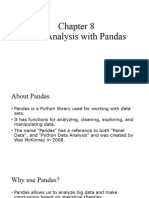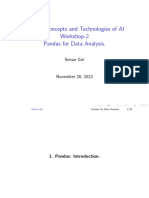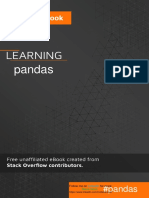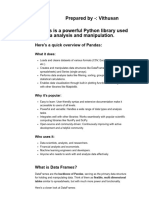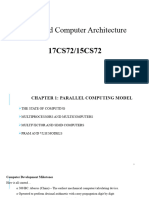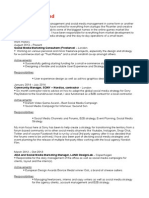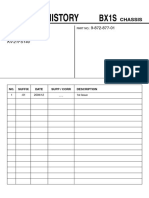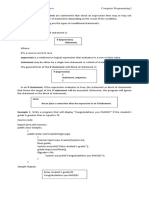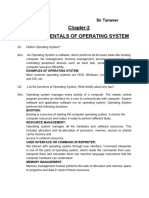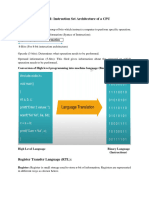0% found this document useful (0 votes)
25 views10 pagesPandas For Machine Learning
Pandas is an open-source data analysis and manipulation tool for Python, featuring DataFrame and Series structures for efficient data handling. It is essential for machine learning as it simplifies data preprocessing, cleaning, and feature engineering. The document covers key functionalities, data loading, cleaning, exploratory data analysis, and best practices for using Pandas effectively.
Uploaded by
avi003Copyright
© © All Rights Reserved
We take content rights seriously. If you suspect this is your content, claim it here.
Available Formats
Download as PPTX, PDF, TXT or read online on Scribd
0% found this document useful (0 votes)
25 views10 pagesPandas For Machine Learning
Pandas is an open-source data analysis and manipulation tool for Python, featuring DataFrame and Series structures for efficient data handling. It is essential for machine learning as it simplifies data preprocessing, cleaning, and feature engineering. The document covers key functionalities, data loading, cleaning, exploratory data analysis, and best practices for using Pandas effectively.
Uploaded by
avi003Copyright
© © All Rights Reserved
We take content rights seriously. If you suspect this is your content, claim it here.
Available Formats
Download as PPTX, PDF, TXT or read online on Scribd
/ 10







